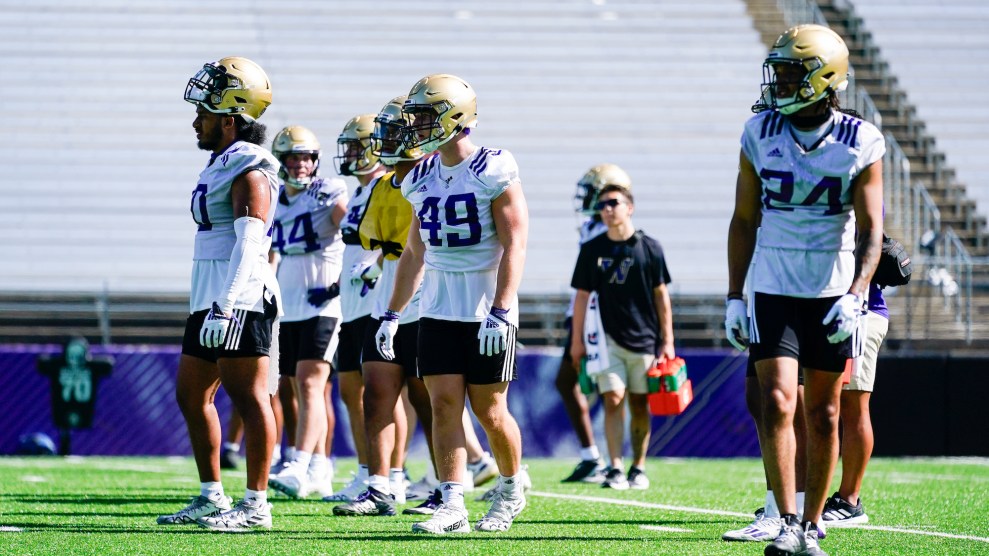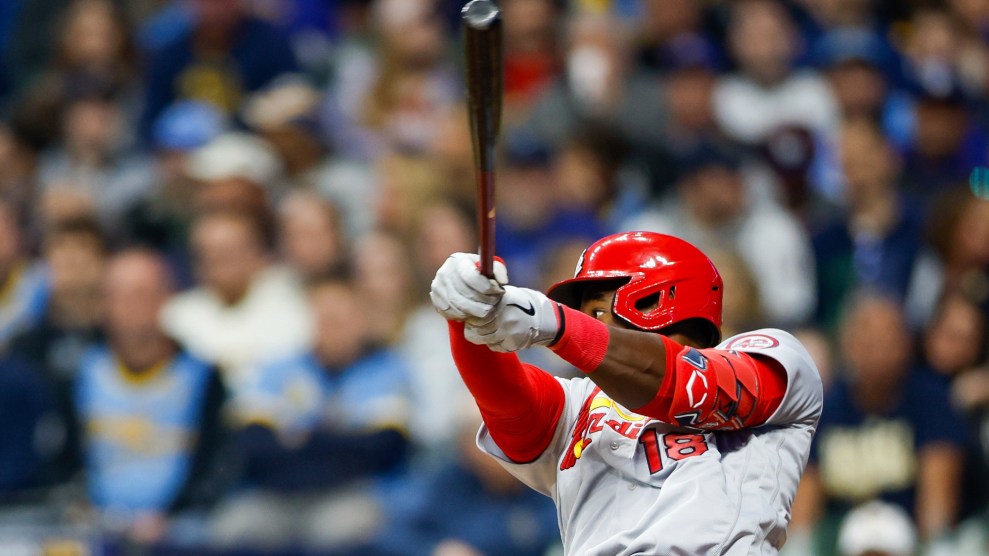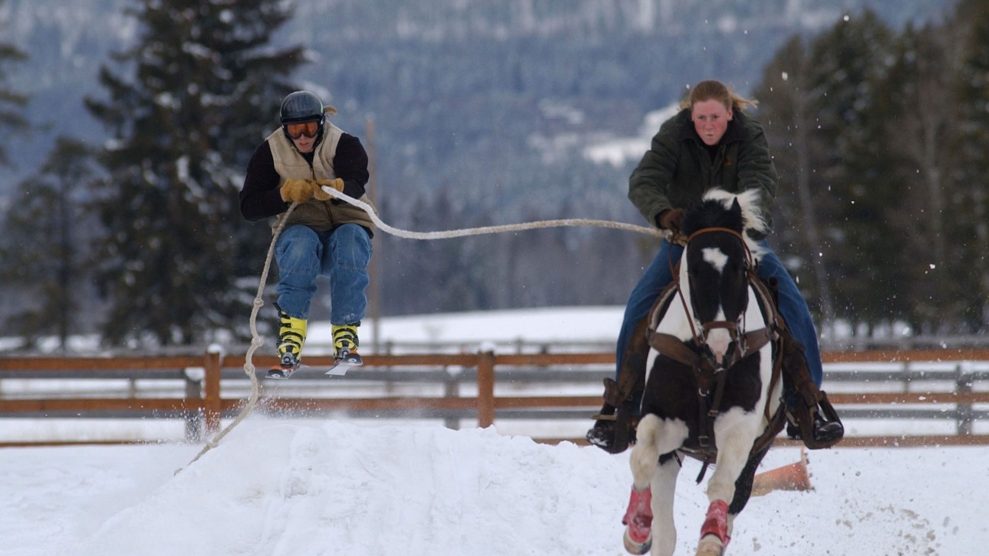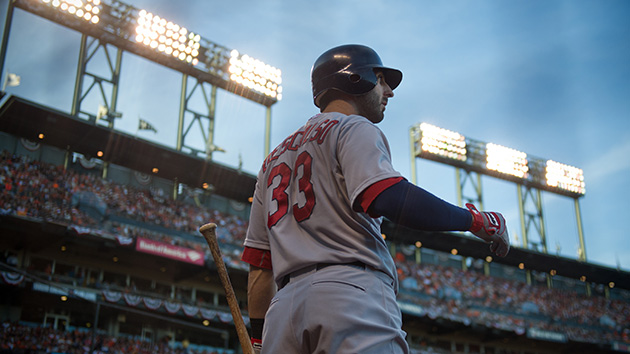
Members of the Washington Huskies, a NCAA team, at a practice in August.Lindsey Wasson/AP
This story was originally published by the Guardian and is reproduced here as part of the Climate Desk collaboration.
At the end of a preseason football practice in late July, Myzelle Law, a 19-year-old defensive lineman for MidAmerica Nazarene University in Kansas, returned to the locker room, and began showing signs of seizure. It was hot outside, but Law’s internal body temperature had reached 108F, his family said. He died about a week later, of heat-related illness.
Last summer, the same thing happened to the 17-year-old lineman Phillip Laster Jr, a rising senior at Brandon high school in Mississippi. In 2021, 16-year-old Drake Geiger, a player for Omaha South high school in Nebraska, died after collapsing on a practice field.
They aren’t the only ones. Between 2018 and 2022, at least 11 football players in the US—at the student and professional level—have died of heat stroke. And the number of young athletes diagnosed with exertional heat illness has been increasing over the past decade or so, as unprecedented, extreme heat butts up against football season.
This summer, the hottest on record in North America, teams across the US have been forced to reckon with a changing climate. High school and college teams in searing south-west states—where temperatures rarely dropped below 110F (43.3C) this summer – escaped to practice in the mountains, or by the coast. Teams took to practicing at dawn, before temperatures became unsafe. Friday night games were held later in the evening, or pushed to the next morning.
And under the searing late summer sun, athletes and coaches are increasingly questioning the sport’s macho, push-past-the-pain mentality. Coaches acquired wet-bulb thermometers, which account for humidity as well as air temperature, to better measure heat stress, as well as cold immersion tubs to treat heat stroke.
“We’re having these heatwaves that are lasting longer. They are more severe than ever before. And they’re touching geographic regions that formerly didn’t experience them,” said Jessica Murfree, a sports ecologist at the University of Cincinnati. “The opportunity to play sports like football is diminishing as a result.”
For Max Clark, a sophomore quarterback for the College of Idaho, the start of each football season in August has felt a bit hotter than the last. “As each year goes by, it feels like more and more of our season is consumed with unbearable or uncomfortable heat,” he said.
Practices were especially grueling last year, when Clark was a quarterback for the Arizona State Sun Devils. Practices began at 6am, so the team could wrap up before the hottest part of the day. And home games were held after sunset. “People don’t even want to sit in the stands and watch when it’s 103F,” he said. Transferring to the College of Idaho wasn’t much of an escape—Boise was trapped under a heat dome for much of July.
To stave off heat illness, Clark closely monitors his nutrition throughout the day, and makes sure to stay hydrated when he’s on and off the field. “It’s about preparing for the heat, because you can’t really escape it.” he said.
Players around the world, across all sports of all levels are grappling with similar realizations. The World Cup-winning midfielder Sam Mewis has written about how her performance has been impacted by extreme heat and wildfire smoke. This year, the US Open amended rules to partially shut the stadium roof in order to shade players during a searing heatwave on the east coast.
But American football players are among the most vulnerable to heat illness. A 2013 study found that the exertional heat illness rate in high school football was 11.4 times that of all other sports combined.
The season’s start coincides not only with the hottest period in much of North America, but also with hurricane season in the south and peak wildfire season in the west. In Idaho, many players and fans have begun to associate smoky skies with football, Clark said. And unlike cross country runners, or soccer players, footballers wear heavy padding and safety gear, which makes it harder for them to cool off.
The artificial grass that students and professionals play on causes even more complications. Studies suggest that synthetic turf can get up to 60F hotter than natural grass, radiating temperatures above 160F on summer days.
Most heat illness happens right at the beginning of the season, or pre-season—when players are first returning to the field after long, off-season rests. It can take two or more weeks for their bodies to adjust to grueling outdoor workouts. Certain medications, including common ones used to treat depression and ADHD, can make players especially prone to heat illness.
Linemen—the biggest, bulkiest players on the team—are extra vulnerable. “They don’t cool off as well as players with a leaner body might,” said Karissa Niehoff, CEO of the National Federation of State High School Association. “The majority of our heat illnesses in football were in the lineman position.”
Nearly a dozen football players died of heat stroke between 2018 and 2022, according to the National Center for Catastrophic Sport Injury Research at the University of North Carolina at Chapel Hill. But the figure may be an underestimate as not all football deaths are reported to the center, or clearly linked to heat in autopsies.
The risks are compounded for young athletes of color, who are more likely to go to schools and live in “heat island” neighborhoods that lack shade and green spaces.
“Imagine, if you live in a place that doesn’t have air conditioning, you don’t have sufficient shade to keep you cool on your walk to school, and then your school doesn’t have air conditioning either,” said Ruth Engel, an environmental data scientist at UCLA who studies microclimates. “By the time you have to go play football, you’ve never had a chance to cool down—so you start at a huge disadvantage.”
The year that the University of Maryland offensive lineman Jordan McNair died—2018—ended up being the fourth hottest year on record globally.
The team had just returned from a month-long break to start their first workout of the season. It was a balmy day—just over 80F, with 70 percent humidity, and all the players were running 110-yard sprints. By his seventh sprint, McNair started cramping up, but kept running. About an hour later, he began foaming at the mouth and about thirty minutes after that, he was loaded into an ambulance. The 19-year-old died two weeks later.
“Really the main thing I kept asking myself was why?” said his father, Marty McNair. “What did I miss? What did I miss?”
A 74-page independent investigation commissioned by the university placed significant blame on the university trainers and medical staff, who failed to check the wet-bulb temperature and modify workouts to reduce the risk of heat illness. Instead, the trainers pushed McNair to keep running even after he showed signs of heat stress and failed to offer life-saving cold-immersion therapy before it was too late.
The university eventually agreed to pay a $3.5 million settlement to Jordan’s family, and in the years since, has adopted new policies to better recognize and prevent heat stroke. And Marty McNair started a foundation named for his son, to train coaches and athletes on heat safety.
Since then, after a slew of scorching football seasons, he’s started to hear more discussion and action on heat safety, he said. “Obviously global warming is real, and that’s going to be impacting athlete’s safety. And I think now people are starting to be more receptive to that idea.”
In 2021, the state adopted a law named for McNair that required the creation of new health and safety requirements in Maryland athletic programs. Lawmakers have introduced a federal version as well.
Still, Marty McNair sees massive disparities in the expertise and equipment that schools have to help athletes experiencing a heat stroke. “Your Black, your brown, your rural community teams, you don’t see them checking a wet-bulb globe thermometer—because they’ve barely got the basics,” he said.
But as the climate changes, he believes the culture of football will have to change as well. “I always told Jordan to be coachable. So I never taught him that if you feel uncomfortable doing something that the coach asked you to do, you don’t have to do it. You know, listen to your body first.”
Zac Taylor can barely remember how his body felt, before he collapsed on the gridiron in 2018. It was hot, and his high school varsity team had been made to do about 280 “up-down” push-ups after two hours of sprints and drills as a punishment for poor performance at a scrimmage.
Taylor just remembers waking up at the hospital a week later. He lost more than 50lbs by the time he was discharged, his mother Maggie Taylor recalled. She has since started a non-profit, along with other parents, that donates safety and medical equipment to school teams and teaches young athletes how to look for signs of heat exhaustion.
Part of that work includes teaching players to slow down, and coaches to ease off. The idea runs counter to football culture in many ways. (“Water is for cowards,” Denzel Washington’s Coach Boone proclaims in Remember the Titans.) Players are incentivized to strain themselves beyond their limits by coaches who themselves were mentored with the same sort of tough love.
“There’s this culture of ‘keep pushing’, of punishment practices and if you stop, you’ll lose your position on the team,” said Maggie Taylor. “That’s how a lot of these old school football coaches operate.”
Part of the problem, says Murfree, the sports ecologist, “is the environment in which today’s athletes are playing sports, is wholly different from the environment when their coaches were playing. Year after year we’re outpacing heat records and catastrophic disaster records.”
Although very young athletes—at the elementary and middle school level—are physically most prone to heat illness, it’s the teens and young adults who are most at risk for exertional heat stroke, studies have found, simply because they push past their bodies’ warning signs.
“With these young adults, all they want to do is make the varsity team, to come off the bench, to get recruited by the best college teams,” said Murfree. “They want to make their coaches and parents proud. And all that can be counterproductive if the body is being overworked.”
There’s an idea that young athletes are superhuman, or act like they are, McNair said. “Jordan was 6ft 5, he was 300lbs. He wore a size 16 shoe—but he was still 19 years old,” he said. “These are still kids.”















